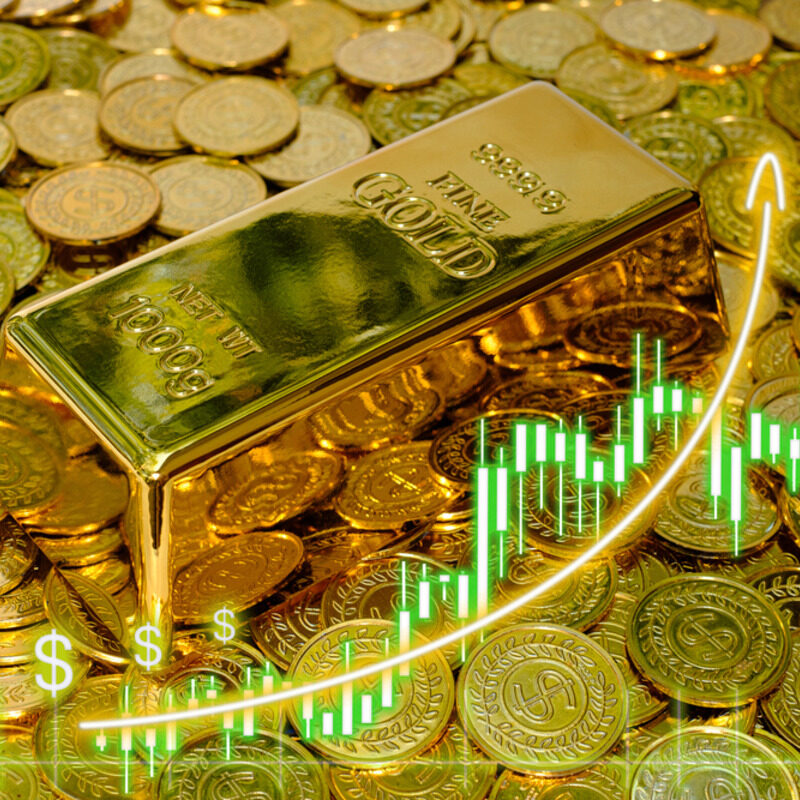Metal Markets

UAE gold prices ease to AED495, global rates retreat amid profit-taking after hitting three-week high

Gold prices on Wednesday, eased slightly after a recent rally, influenced by a rebound in the U.S. dollar and investor profit-taking, despite ongoing expectations of a Federal Reserve interest rate cut in December. The gold market had been supported earlier by a soft dollar and hopes of monetary easing, amid economic uncertainty linked to the prolonged U.S. government shutdown.
International spot gold prices fell approximately 0.11 percent to $4,105.85 per ounce, after hitting a nearly three-week high in the previous session. In contrast, U.S. gold futures for December rose by 0.15 percent, reaching $4,110.25.
Similarly, in the UAE, gold rates saw a decline. The price of 24-carat gold rose by AED0.25, reaching AED495.00, while 22-carat gold fell by AED0.50 to AED458.25. Meanwhile, 21-carat gold decreased by AED0.75 to AED439.25, and 18-carat gold dropped by AED0.25, settling at AED376.75.
The gold futures for December on India’s Multi Commodity Exchange (MCX) rose modestly to INR1,24,340 per 10 grams, reflecting steady demand in the Indian market. Silver prices experienced a modest increase today, rising 0.40 percent (or 20 cents) to reach $51.12, supported by interest in safe-haven assets and industrial demand.
The dollar index edged higher to an intraday level around 99.46, making gold more expensive for holders of other currencies, which pressured the yellow metal’s rally. This dollar strength prompted some investors to cash out profits after gold’s four consecutive days of gains, despite broad market anticipation of a policy shift by the U.S. Federal Reserve.
Federal Reserve rate cut expectations
The gold rally had been underpinned by rising speculation that the Federal Reserve would reduce interest rates at its December meeting. Weak U.S. labor market data — including rising job cuts and soft private employment reports — boosted the prospects for monetary easing, which tends to support gold prices as lower interest rates reduce the opportunity cost of holding non-yielding bullion.
Fed fund futures pricing showed a surge in the chance of a 25 basis-point rate cut to above 90 percent, up from about 66 percent the previous day, following signals from economic data and the nearing end of the U.S. government shutdown. That shutdown, the longest in history, had kept markets on edge, but its resolution diminishes economic uncertainty, which typically weighs on safe-haven assets like gold.
In India, one of the world’s largest gold consumers, domestic gold prices edged higher on November 12 with 24-carat gold trading just below INR1,25,980 per 10 grams in Delhi, reflecting both firm local demand and a resilient rupee. Other major cities exhibited similar price stability or mild increases in gold rates. Silver prices in India also increased marginally.
Dubai’s gold prices mirrored international trends, remaining competitive partly due to the emirate’s tax-free status and role as a global trading hub.
Influence of the U.S. dollar and central bank purchases
The gold market remains influenced by multiple factors. The movements of the U.S. dollar inversely impact gold’s accessibility on a global scale. Additionally, macroeconomic data releases, including employment and inflation figures, play a significant role in shaping market dynamics. Political developments, such as the reopening of the U.S. government after a shutdown, can reduce market risk premiums, further affecting gold prices. Furthermore, central bank purchases, particularly from countries like China, continue to accumulate gold, providing underlying support to prices. Speculative investor behavior also contributes to market fluctuations, with profit-taking often occurring following price rallies.












